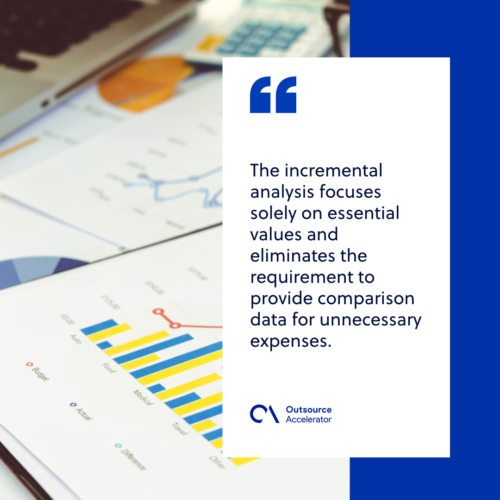Incremental analysis
Definition
What is incremental analysis?
Incremental analysis is a decision-making technique used to assess the costs of different choices.
Also known as relevant costing, it evaluates possible changes in revenues and expenses between alternatives. It helps a business determine the alternative with the highest net income or the lowest price.
How does incremental analysis work?
Incremental analysis models are made up of relevant costs divided into variable and fixed costs. To guarantee that a business pursues a favorable choice, the analysis takes into account opportunity costs, which refer to the missed opportunity when you pick one alternative over the other.
The incremental analysis focuses solely on essential values and eliminates the requirement to provide comparison data for unnecessary expenses.

How to calculate an incremental analysis?
The following are the steps in determining what information you require to perform an incremental analysis, as listed on Indeed.
Step 1: Determine the relevant costs
Incremental analysis starts by identifying the available options and the variable and non-variable revenues associated with each of them. It’s important to distinguish irrelevant costs such as overheads and sunk costs.
Step 2: Identify any opportunity costs
Consider any opportunity costs that may be associated with the alternatives. Opportunity costs are potential revenues that a company may lose for various reasons.
Step 3: Add costs together
Combine the applicable costs. Depending on how they affect the computation, either add or deduct the opportunity costs. Do this for each alternative.
Step 4: Compare the options
Compare the results with one another or use figures like product prices as a point of comparison.
Step 5: Make a decision
After the comparison, at this point of your incremental analysis, you should be able to determine the most profitable course of action.







 Independent
Independent




